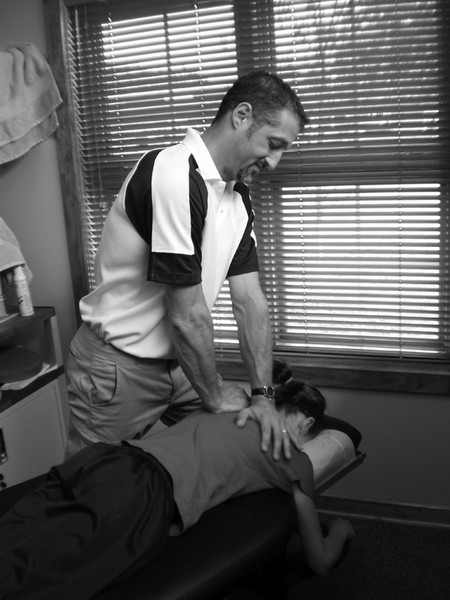At first consideration, sending a child to the chiropractor may appear unnecessary. Kids seem to bounce back from injuries with relative ease. But when you start to consider the many activities that children participate in—athletics, playing instruments, roughhousing, gaming—the idea that chiropractic could play a role during critical growth stages begins to make sense.
“Child athletes and musicians are very prone to repetitive injuries that can cause very severe orthopedic injuries down the line if they’re not addressed soon,” said Dr. David Ness, a chiropractor in New Paltz. “I have kids who, with the repetitiveness of horseback riding, track and field, or baseball, come in with the strains and sprains that professional athletes come in with.”
For this reason and more, the field of pediatric chiropractic is growing. According to a 2005 study by the National Board of Chiropractic Examiners, the number of chiropractic patients under 17 years old had increased from 9.7 percent in 1991 to 18.2 percent. But it’s not just child athletes who are seeking treatment for muscular issues. According to a study by the International Chiropractic Pediatric Association (ICPA) on juvenile chiropractic care, musculoskeletal concerns ranked only third as a reason for chiropractic treatment, following respiratory and gastrointestinal problems.
The idea that chiropractic can help not just musculoskeletal problems but also the whole body’s healing process is not news for Ness, who at age three was taken by his mother to a chiropractor to battle a recurrent ear infection. Today, in his own practice, he’s worked with children who have mild cerebral palsy, asthma, and many other conditions. With respiratory issues, for example, Ness said adjustments can help free up vertebrae and ribs that are not moving properly. “If one area is fixed, it’s going to cause another area to be fixed, and you won’t be able to get deep breaths in or expand your lungs,” he said.
Although the chiropractor’s goal of keeping nerve flow free has benefits for a number of conditions, the majority of Ness’s work with children involves sports-related injuries and pain resulting from poor posture. “[Kids] spend so much time at a desk with poor posture, and watching TV or studying on the computer with poor posture, that all of those things eventually cause back or neck pain,” he said. “If you start that habit in first or second grade, by the time you get into ninth grade eight years have gone by where developing bones have not developed properly, and we’re already seeing signs of early arthritis in teenagers because of [this].” Visiting a chiropractor can help with the current pain and also prevent further injury through education on everything from proper posture and how often to change position to how much weight to carry in a backpack—all information that is pertinent to children who spend hours a day at school desks and lugging around heavy textbooks. Ness also demonstrates stretches and exercises for his patients that will counteract the negative posture or repetitive movement that’s causing injury, which helps to prevent further damage.
According to Ness, chiropractic can even be performed on infants and toddlers, though he said the traditional chiropractic techniques are modified for smaller-size patients. For example, instead of using the palm of the hand during an adjustment, Ness said he might use his fingertips, and a lot less force. While some of these patients may be too young to verbalize a complaint about pain or an injury they’ve sustained, it doesn’t mean they couldn’t benefit from a checkup, he said. Youngsters often have trips and falls, or sleeping positions, that could cause damage.
Although some parents may be concerned about potential risks of chiropractic to young children, the ICPA study on the safety and effectiveness of chiropractic care indicates that less than 1 percent, of the 10,249 office visits it considered, reported minor adverse events resulting from treatment, while 66 percent described improvements in their present complaints. A further 8 percent spoke of improvements not directly related to their original complaint, such as improved sleep, mood, and immune function.
“You have to go to the dentist to check your teeth periodically,” Ness explained. “They need to be cleaned, flossed, and taken care of. Your teeth are a very important part of your body, and your spinal column is equally important to your body. It houses and protects your spinal cord, and through it, your brain connects to the rest of your body. If that breaks down, where are you going to be? You need to have someone take care of your spine and the muscles of your spine and body so that they will serve you well down the line.”
RESOURCE:
David Ness, CCSP
3 Cherry Hill Road, New Paltz, NY
(845) 255-1200
www.drness.com

















